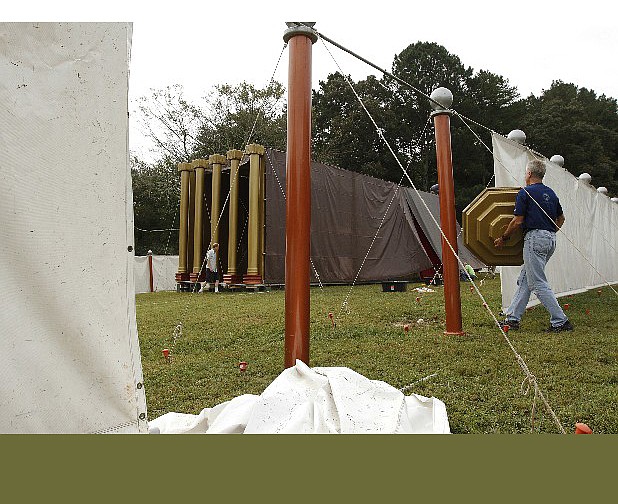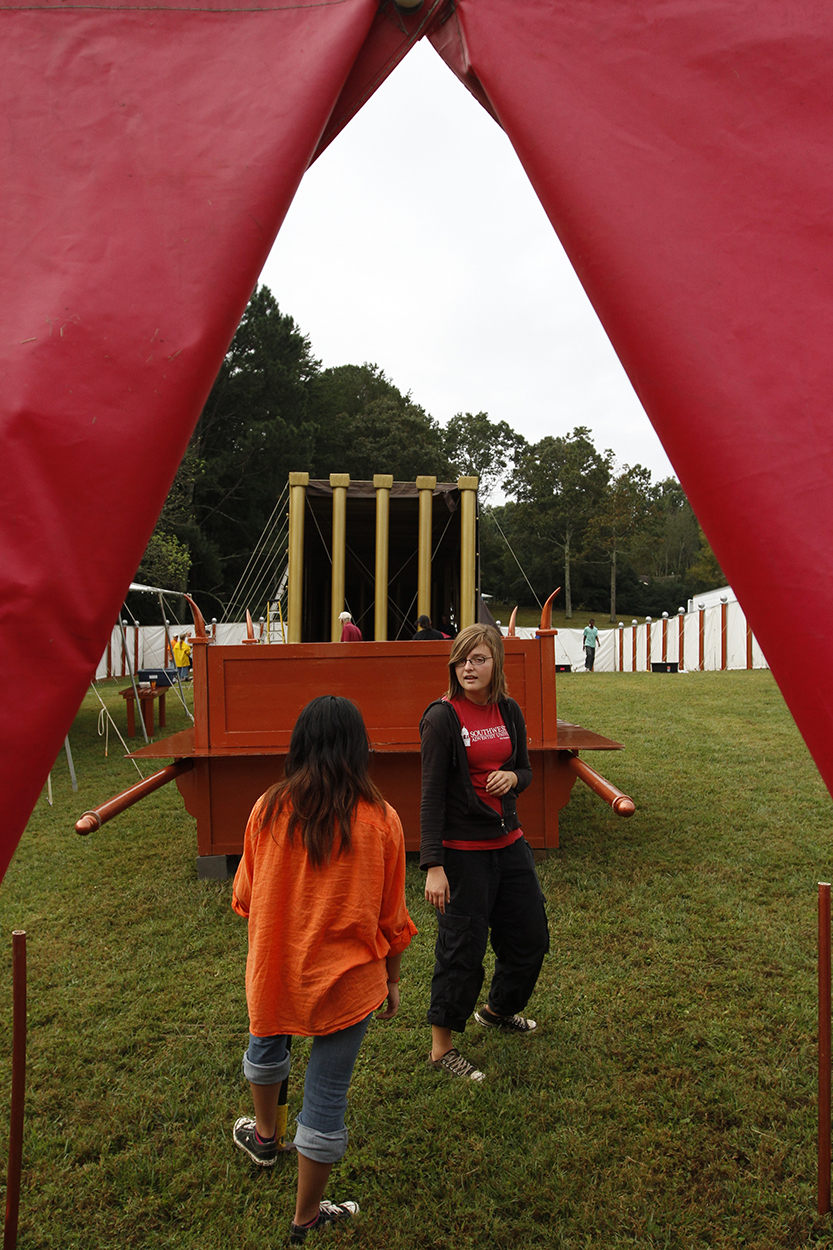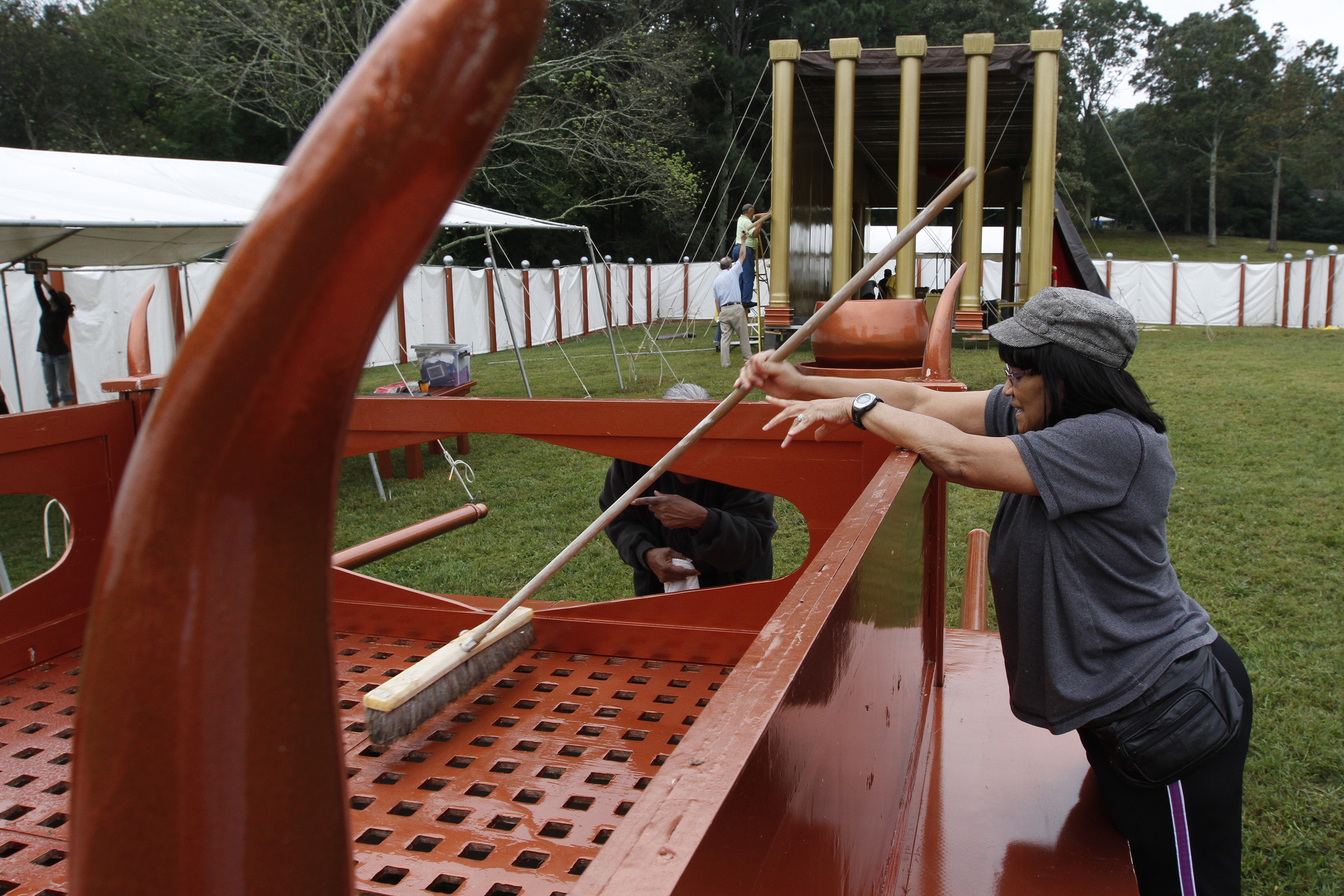What could possibly be relevant about a tabernacle built in a desert 3,000 years ago?
Everything, says Clayton Leinneweber.
Indeed, he says, a tabernacle built by Moses and the Hebrew people connects the Old Testament and New Testament, foretells the coming of Jesus Christ and links the events of the Christian savior's life and death.
That's why Leinneweber spends weeks each year driving from his home in Harrah, Okla., to set up, tour and take down a full-scale model of the ancient structure discussed in the Bible books of Exodus and Leviticus.
"Everything [in it symbolically] is foretelling something of Christ," he says as the tabernacle rises behind him on a grassy hill sloping up from Standifer Gap Road in East Brainerd. "It opens up things, things people have never put together."
Messiah's Mansion now is open for free tours from 1 to 7 p.m. daily at Standifer Gap Family Center, 8304 Standifer Gap Road, through Sunday. It is sponsored by Chattanooga First, Hamilton Community, Ooltewah and Standifer Gap Seventh-day Adventist churches.
Leinneweber, a Bible teacher at Oklahoma Academy in Harrah, says while Adventist churches often closely study the tabernacle, the nonprofit Messiah's Mansion is nondenominational and has been exhibited in such places as the University of Florida, a health care center in Ohio, the Bahamas, Canada and Jamaica. The Chattanooga stop will be one of nearly 20 the exhibit will make this year.
Dave Ketelson, pastor of Hamilton Community Church, says the tabernacle is not only an incredible display of what occurred in the desert between Egypt and what is today Israel, but various aspects within it point definitively to the life of Christ.
"It comes to life," he says. "It's so cool. It all lines up. It's all foretold in the Scriptures."
The tabernacle, according to the Old Testament, was built to be the portable dwelling place for God during the years between the Hebrew people's exodus from Egypt and their entrance into the promised land of today's Israel.
The tour of the traveling tabernacle covers five sections, each about 15 minutes for visitors. Trained guides, dressed as ancient priests, offer a structural overview of the tabernacle; explain the symbolism of the altar of sacrifice and the laver (ceremonial cleansing basin); discuss the table of shewbread (consecrated unleavened bread), the altar of incense and the candlesticks in the Holy Place; point out the ark of the covenant (containing the tablets of the Ten Commandments) in the Most Holy Place; and give details on the special garment worn by the high priest.
The tabernacle arrived in a 48-foot tractor-trailer truck last week with a group of nearly 20 volunteers that included members of the sophomore class from Oklahoma Academy. They were joined for the build by a similar-sized group of volunteers from the local host churches.
It usually takes the better part of three days to erect the 45-by-15-foot temple within a 75-by-150-foot courtyard, according to Leinneweber, but just a little more than a half day to take down since one piece fits in another which fits in another. He says he's never counted the individual parts in the exhibit but knows 600 stakes go into the ground to hold down the canvas fence and some of the other displays.
Melissa Summers, executive producer/director of DVI Global Productions and local marketing director for the event, says she has seen the tabernacle several times and is amazed each time. She says the symbolism of the altar of sacrifice, where lambs were slaughtered in the day of the tabernacle, and God's sacrifice of his son are never lost on her and often bring her to tears.
"The lamb (Christ) suffers to show how painful sin is to [God]," she says. "And, yet, he forgives, but we have to take responsibility."
Leinneweber says he was a baker in California in the 1990s when, on a camping trip with about 1,500 young people, a pastor explained the tabernacle with small-scale pieces.
"I saw the attention the young people had," he says. "They were so focused, listening so closely. I thought, 'Let's build it full scale and bring it around for people to see it.'"
It wasn't until he moved to Oklahoma and became a teacher in 2003, though, that he developed the present model. Today, there are three models, and occasionally all three have been exhibited across the country at the same time.
Leinneweber says host churches pay only about half the expenses of bringing Messiah's Mansion to a site. For the rest, he says, he simply determines "what God wants me to do." Somehow, he says, it all works out.
Contact staff writer Clint Cooper at ccooper@timesfreepress.com or 423-757-6497. Subscribe to my posts online at Facebook.com/ClintCooperCTFP.


